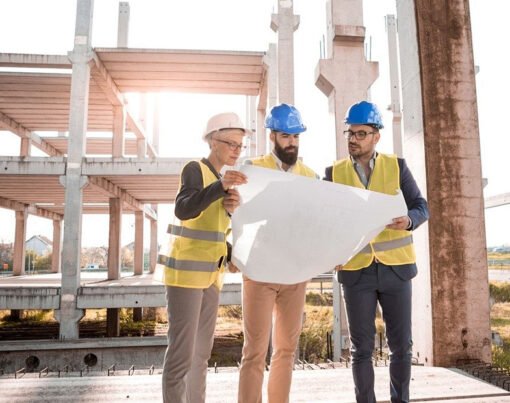The advent of augmented reality (AR) has created a seismic shift in the way we visualize construction projects. No longer relegated to the realms of science fiction, AR has penetrated the construction industry, adding a new dimension to project planning and execution.
This article explores how AR revolutionizes construction visualization, turning blueprints into interactive 3D models and thereby making the unseen, seen. Let’s delve into the transformative impact this cutting-edge technology has on the construction industry.
So, how is augmented reality used in construction? Check out XYZ Reality’s Atom AR headset and see how it’s revolutionizing construction projects.
The role of AR in 3D modeling
AR’s role in 3D modeling in the construction industry is multifaceted and transformative, fundamentally reshaping the way projects are visualized and executed:
- Interactive visualization: AR turns static 2D blueprints into dynamic 3D models, enabling stakeholders to interact with designs in real-time. This results in a more immersive and comprehensive project understanding.
- Real-time modifications: AR allows for on-the-go modifications to designs. Changes are instantly reflected in the 3D model, facilitating swift feedback and improved collaboration among project teams.
- Accurate scaling: AR in 3D modeling provides accurate scale and perspective, enabling a true-to-life representation of the project. This feature minimizes errors and improves the accuracy of the construction process.
- Virtual simulations: AR enables virtual walkthroughs of the project before actual construction begins. This capability allows for early detection of potential design challenges, thereby reducing costs and saving time.
- Efficient resource management: With AR, project managers can foresee spatial requirements and resource allocation more effectively, leading to better planning and efficient resource management.
In essence, AR in 3D modeling brings greater precision, improved communication, and heightened efficiency to the construction process.
Impact of AR on project planning and execution
The impact of AR on project planning and execution in the construction industry is profound and transformative. For starters, AR provides a three-dimensional view of the project during the planning phase, allowing stakeholders to visualize the completed project in its actual location, even down to minute details such as furniture placement.
This detailed visualization aids in the detection of potential design or structural issues before construction begins, saving time and reducing costs associated with late-stage modifications.
During the execution phase, AR plays a crucial role in facilitating accurate and efficient construction.
Workers can use AR devices to overlay 3D models onto the physical construction site, providing a precise guide for where each component should be placed. This eliminates guesswork, reduces errors, and enhances the speed of construction. Furthermore, it allows for real-time monitoring of the progress, enabling instant modifications if necessary.
Overall, AR promotes a holistic and interactive approach to construction project planning and execution, transforming the way the industry operates. The blend of virtual and real-world elements it introduces leads to a significant increase in accuracy, efficiency, and safety, paving the way for smarter construction practices.
Seeing is believing
Augmented reality has the astounding ability to make the unseen, seen in the construction industry, pushing the boundaries of what we perceive and interact with:
- Layered visualization: AR goes beyond mere images and models, adding layers of information to the visual field. For instance, it can overlay structural data, material specifics, or even environmental factors onto 3D models, making invisible aspects visible and accessible.
- Real-time data access: AR provides real-time access to data that is usually unseen or hard to comprehend. This includes complex calculations, project timelines, and resource allocations, all seamlessly integrated into the visual model.
- Immersive experiences: AR makes unseen future stages of the project visible, such as the final outcome or potential problems. It allows virtual walkthroughs of completed designs, offering an immersive preview of the structure long before actual construction.
- Seamless integration: AR reveals the blending of physical and digital spaces, a concept previously unseen and unimaginable. It superimposes 3D virtual models onto actual construction sites, allowing workers to see where each component should be placed relative to the real-world environment.
- Risk visualization: AR can visualize potential risks in construction, such as structural stress points, clash detections, or safety hazards, which are often unseen in traditional practices.
In essence, AR gives form to the formless, adding a new dimension of understanding to construction visualization. By making the unseen aspects of construction tangible and interactive, AR empowers stakeholders to make more informed decisions, improving the overall efficiency and safety of the project.










